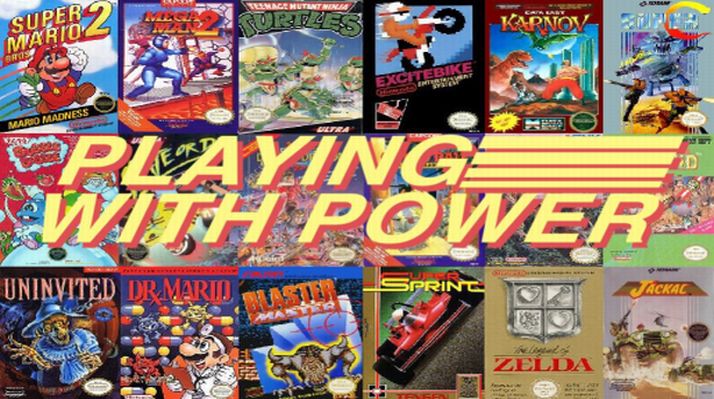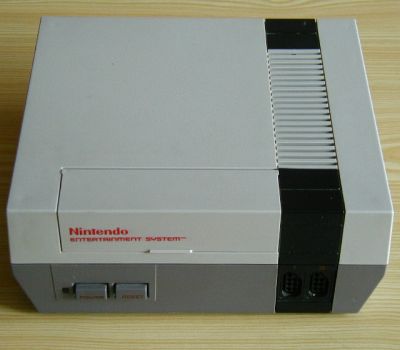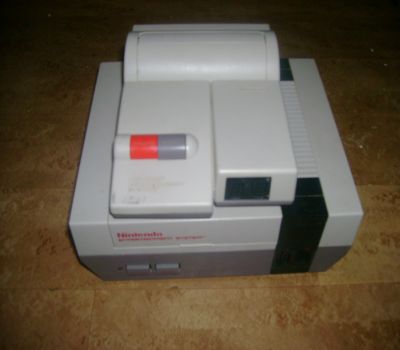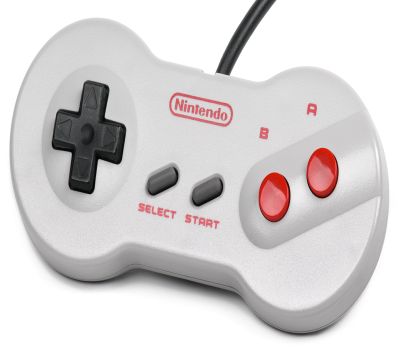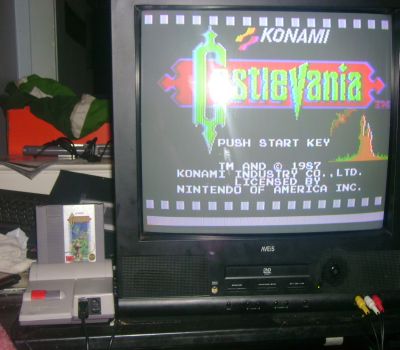Welcome to another edition of Playing With Power. The review article that looks at all things NES. If you’re even mildly familiar with the NES, then you’re well aware of its design. Grey and white, and boxy, akin to a VCR. And if you’re familiar with the NES, then you know of a lot of its problems, namely the problem of flashing screens, and poor connection problems. It’s a shame Nintendo didn’t just fix that issue.
Well, they did. But perhaps at the worst time.
This week, we’re not going to review a video game, and instead look at the swan song of the NES itself, the NES Model 2 Top Loader, or, honestly, what the console should have been to begin with, at least in my opinion.
Before we tackle this console, let’s take a trip back to the year 1983. The gaming industry was starting to fall down a slippery slope. Too many consoles and games in the market, along with no quality control were starting to make the consumers turn. Not to mention now legendary duds like Atari’s Pac-Man and of course E.T that spearheaded the beginning of a backlash. By late 83, the entire North American video game market crashed, and it was already looking like console gaming was dead forever.
However, over in Japan, the industry was still doing well, and Nintendo, who had earned major notoriety in the gaming industry thanks to hits like Donkey Kong and Mario Bros, would make the jump into the console market with their first outing, the Family Computer, or as it was better known, the Famicom. The system, despite some initial issues, would soon prove a massive success in Japan, and Nintendo was ready to conquer America. And despite early situations, like a falling out with Atari, among other issues, Nintendo sought to release their console in 1985, among a still dead American console market.
The NES was drastically different in design from the Famicom in an attempt to distinguish itself against the competition, as well as to not just sell it as a video game console, as it was still an unwise move to do so at the time. So, it was referred to as an “Entertainment System”, and bundled with things like the Zapper gun, and of course R.O,B the robot. But the biggest change was the shift from a top loading design, to a front load, akin to that of a VCR. The cartridges were also changed from the smaller designs to bulkier grey carts. You place the cart inside the machine, instead of popping it in the top.
This however would become the ultimate flaw of the NES. This front load design could often make it hard to get a game to work immediately, as connectors would sometimes not touch properly, or a cart wouldn’t fit in perfectly. Not to mention this would often lead to easily bendable pins in the machine’s 72-pin connector. Despite those issues however, the NES was still a massive hit, selling over 60,000 machines worldwide.
Fast forward to 1993. The 16 bit wars were well under way with Sega’s Genesis console and Nintendo’s Super NES console being the heavy hitters. However, still chugging along was the NES, and its now antiquated design. In a last ditch effort to attract new gamers who weren’t ready to hop to the 16 bit era yet, Nintendo would redesign their console after all these years to a newer, sleeker top loading design. They would also market the console to a mere $49.99 US. Despite the new look however, the new NES still sold poorly, as it was just a case of being way too late with a console that was already at death’s door. The NES 2 was discontinued a year later, as Nintendo finally bowed out their 8 bit console for good in 1994.
So, now that we’ve looked at the history of the console, let’s get to reviewing the machine itself.
The console is a sleeker, smaller machine, roughly around half the height and width of the original NES. It’s still grey and white, with a red power button which is slid upward to turn on, instead of being pushed in like the prior console. There is also a grey pushable reset button on the front. The system’s core design is akin to the Super NES, but far smaller, and far more basic. The games go on the top of the console, as to be expected, and lock in fairly tight.
Unlike the original NES, you don’t have to have as much of a fight with your console and cart to get things to work, normally games will work immediately. Though, if your cart is dirty, you’ll still have to clean it regularly to ensure maximum play quality. The console’s smaller design means it takes up less space than the previous console, however due to the size of NES carts, which can look pretty obtuse sticking out the way they do, you may want to ensure you have enough vertical room for the machine once you start looking for an area on your entertainment centre to place the system.
Another addition to the NES 2 is the inclusion of the new controller design. It’s a white controller, slightly longer than the original NES controller, and has a more bumpy, dog bone style design (hence the nickname “Dogbone Controller”), which actually feels much nicer on the hands unlike the boxy, pointy NES controller. My only gripe is that the A and B buttons are slightly diagonal unlike the original controller’s straighter placement, but that’s more than likely a case of unfamiliarity on my part. That aside, it’s still a quality looking controller.
Another bright plus to the NES 2 is that it is region-free. Every NES game works on the console, whether it be licensed or unlicensed. Not only that, but PAL NES carts will also run on the system. So Americans who missed out on certain titles like The New Ghostbusters 2 for example can finally get a chance to try this title out, without having to open their console and “Do surgery”, which can of course be dangerous to anyone who isn’t all that technologically inclined.
So, with all of those shining pluses, are there any cons to this console? Well, one major gripe is that the console only supports RF hookups, and has no AV outs, which even the original NES had. This exclusion was likely to produce the console far cheaper. So, unless you have a rather old TV, you may have some issues with working this console. However, if you’re like me, you always play your NES on an older tube television, so there should be no problems. You will get weird scan lines, and of course a drop in sound and video quality, but it’s really a worthy sacrifice for superior top loading gaming.
There’s also no red LED light on the front. So, say you wrapped up playing for a while, and forgot to turn the console off, you may not notice until far later, as there is no red light to warn you. Another minor issue is that the Game Genie is unusable without a certain adaptor. But why would you want to use a Game Genie anyway, cheater? One last issue I personally have is that while still an okay design, I prefer the look of the original, if only for nostalgia value.
The NES Model 2 is a great console, and really has a lot of positives that even the original NES lacked. If you can live without top video quality for the console, then this is definitely a worthy investment for any NES gamer who is at their wits end with their front loader. The console is a rarity however, and can go for pretty steep prices on Ebay, but its definitely worth it if you can get one. In recent years, there have been many top loading consoles on the market, however these alternatives often lead to abysmal sound and video quality, and even the inability to play all games. I would say avoid them, and try your hand at finding a model 2 instead. If you’re looking for a different way to play with power, then this is the machine for you.
RATING: Thumbs Up
Major thanks to fellow FAN forum member CM Waters for getting me this Model 2 console. Check out his fine works at his Watersfall Industries blog.

